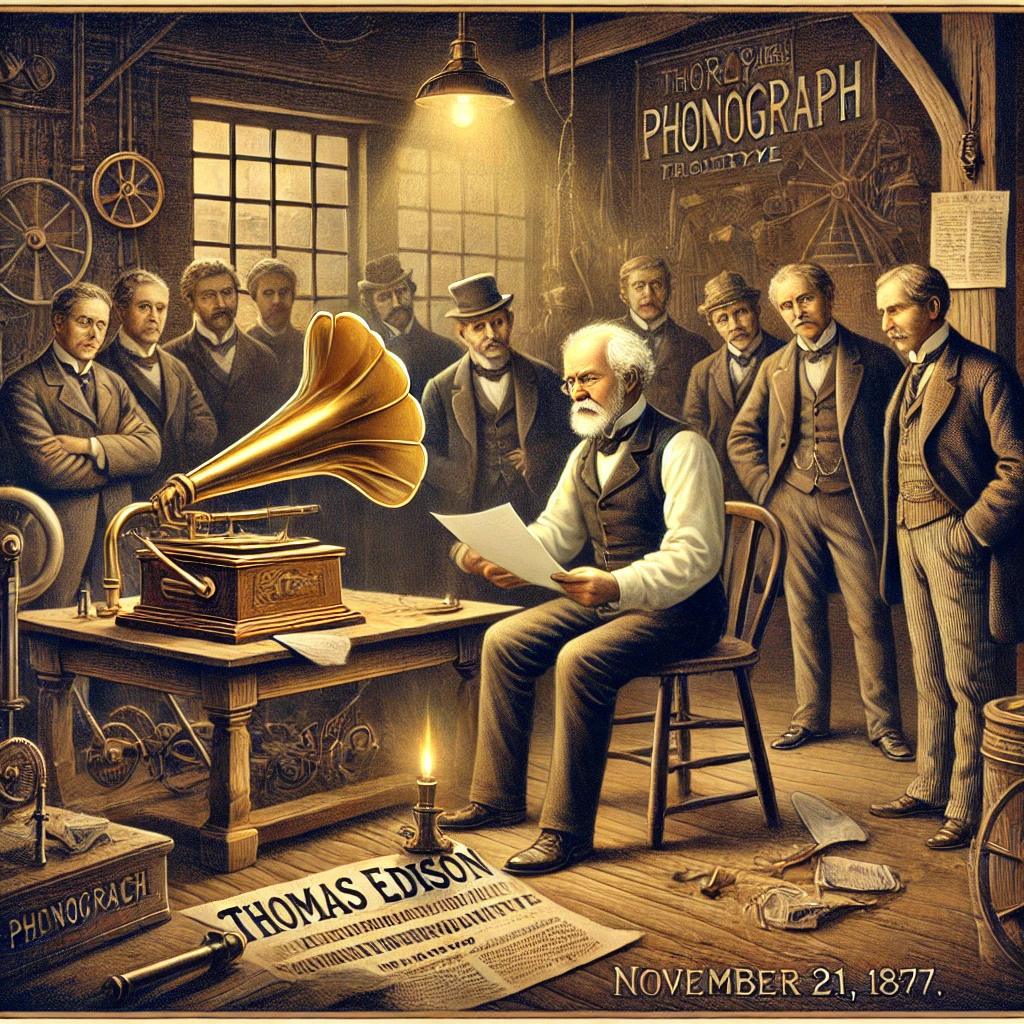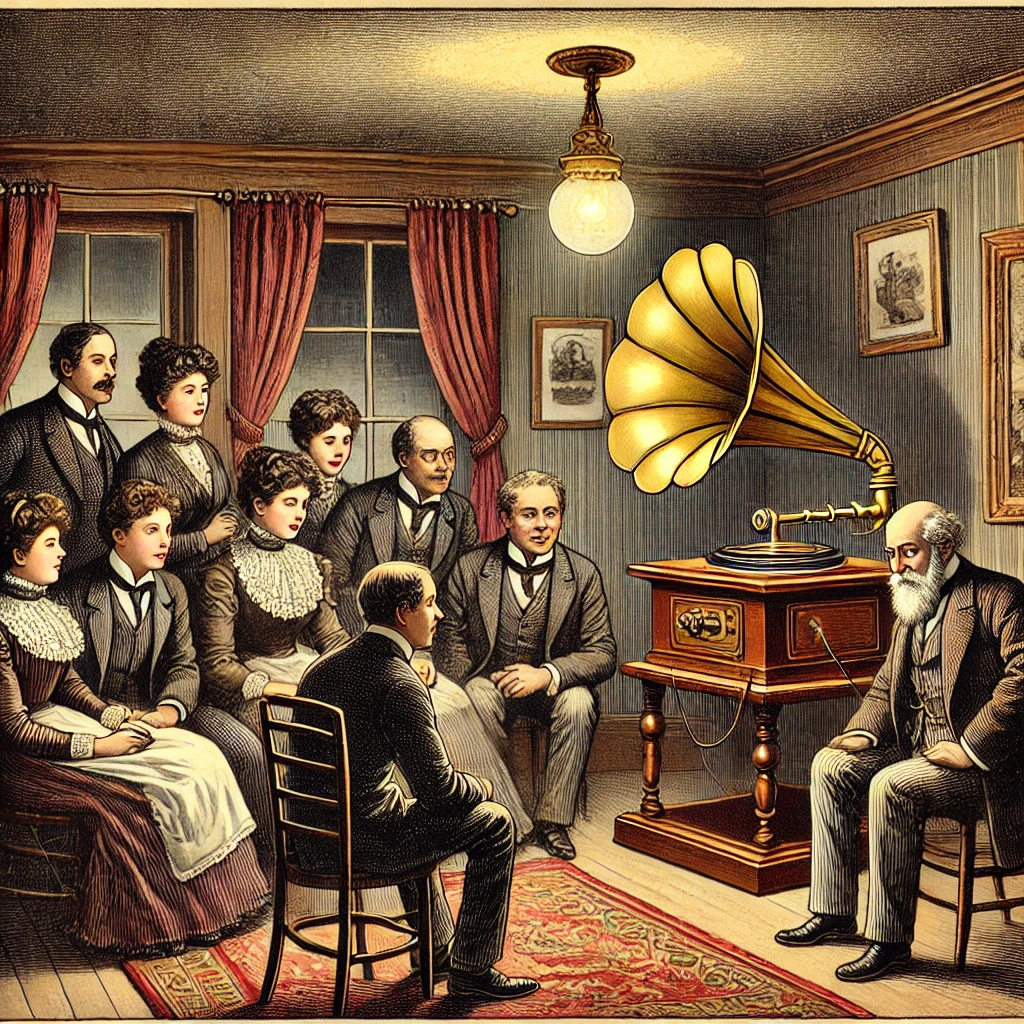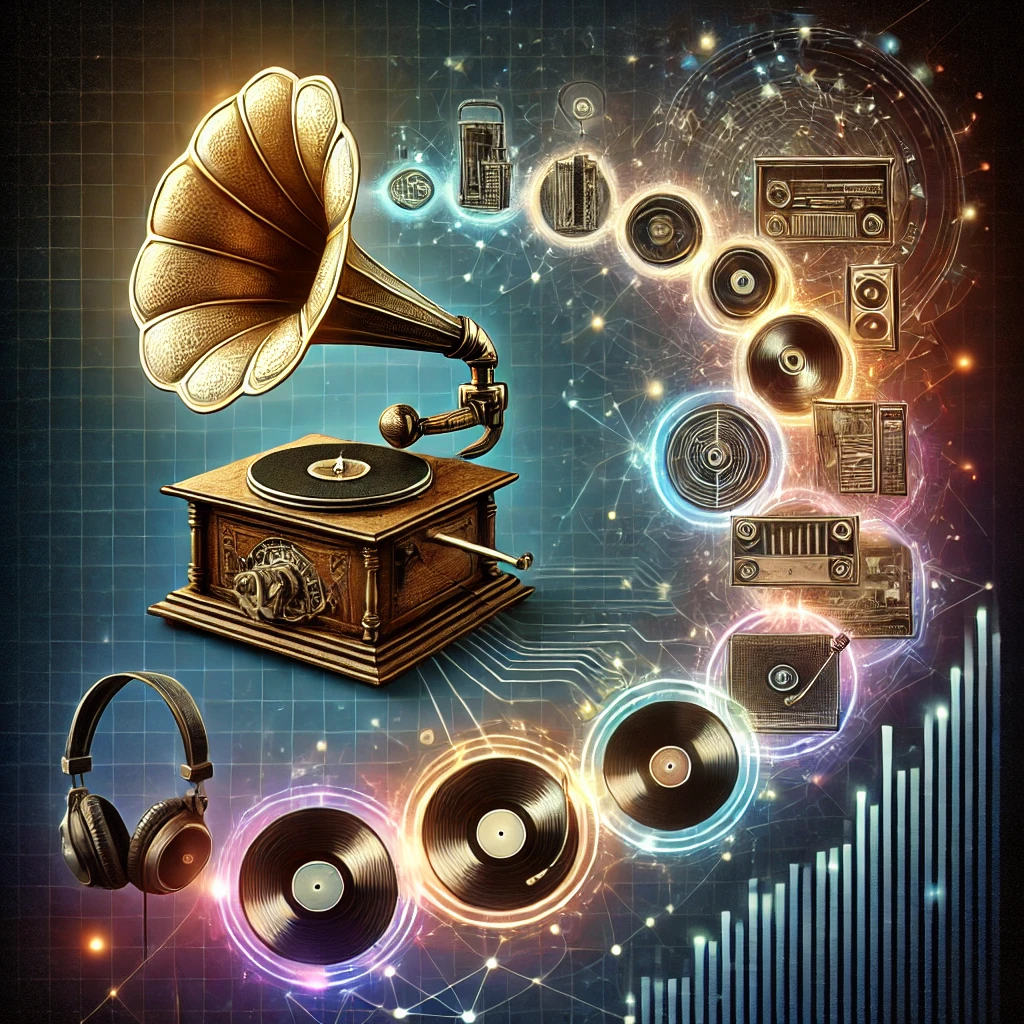On November 21, 1877, Thomas Edison unveiled an invention that would forever change how humans interacted with sound: the phonograph. This groundbreaking device was the first capable of recording and reproducing sound, setting the stage for a revolution in music, communication, and entertainment. Edison’s announcement was met with awe and skepticism, as the concept of capturing sound seemed almost magical to the 19th-century public.

The Revolutionary Innovation
Edison’s phonograph used a simple yet ingenious mechanism to record sound. By speaking into a mouthpiece, sound vibrations were etched onto a rotating tinfoil cylinder by a stylus. The same stylus could later retrace those grooves, reproducing the original sound. This marked the first time humanity could preserve a moment in time through audio, making the ephemeral permanent. While Edison himself initially saw the phonograph’s potential for office dictation, its applications quickly expanded far beyond that vision.
Significance in History
The phonograph’s impact was immediate and far-reaching. By 1878, Edison demonstrated his invention to audiences worldwide, sparking interest across multiple industries. Musicians could now record their performances, bringing music into homes rather than limiting it to live venues. For the first time, individuals could listen to the same song regardless of their location, creating a shared cultural experience. Beyond music, the phonograph played a role in education, entertainment, and even scientific fields, enabling the preservation of languages and natural sounds.

The invention also marked a turning point in the commercialization of entertainment. Record companies soon emerged, leading to the establishment of an entirely new industry. As records evolved from fragile cylinders to more durable discs, the phonograph became a household staple, democratizing access to art and culture.
Lasting Legacy

Edison’s phonograph laid the groundwork for modern audio technology. Its core principles continue to influence contemporary devices, from turntables to digital audio players. While the tinfoil cylinder gave way to vinyl records, cassette tapes, CDs, and ultimately digital formats, the desire to capture and replay sound remains central to how we consume media today.
Moreover, the phonograph transformed how people experience music, fostering global cultural exchange. It allowed artists to reach audiences they could never perform for in person and preserved masterpieces for future generations. The phonograph also created an enduring market for recorded music, ensuring that artistry could be both shared and financially sustainable.
From Edison’s seemingly magical invention in 1877 to today’s streaming platforms, the phonograph’s influence endures. It not only revolutionized entertainment but also reshaped how humanity connects with art, history, and each other. Every time we press play, we echo the ingenuity of that momentous day in history when sound was given a new life.
